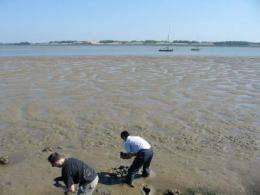Vital role for bacteria in climate-change gas cycle

Isoprene is a Jekyll-and-Hyde gas that is capable of both warming and cooling the Earth depending on the prevailing conditions. It is an important industrial gas, necessary for the manufacture of important compounds such as rubber and vitamins, but very little is known about how isoprene is cycled in the environment.
Today, at the Society for General Microbiology's spring meeting in Edinburgh, Dr Terry McGenity reveals the identity of some crucial players in the gas cycle; isoprene-degrading bacteria that are able to intercept the release of isoprene into the atmosphere.
After being released by plants and algae, isoprene reacts with molecules in the atmosphere to produce ozone. It can also prolong the lifetime of methane in the air. Both ozone and methane are potent greenhouse gases that lead to global warming. Conversely, in certain conditions, isoprene can undergo chemical reactions to form aerosols that can increase cloud cover leading to cooling of the Earth.
Together with colleagues at the University of Essex, Dr McGenity discovered that that there are numerous types of bacteria able to consume isoprene before it even enters the atmosphere. These bacteria were found concentrated around coastal zones that are known to be hot spots of marine isoprene production by algae.
"The discovery will improve models that help us to predict how climate change and other environmental factors affect isoprene flux and vice versa," said Dr McGenity. "Until now modelling the overall flow of isoprene from the sea to the atmosphere has been hampered by inadequate understanding of the main producers and consumers," he explained.
Interestingly, many of the isoprene-degrading bacteria can also break down alkanes (a major component of crude oil). "This suggests that algal-derived isoprene may help important oil-degrading microbes to survive between spills," explained Dr McGenity.
An understanding of how isoprene is naturally cycled in the environment could have important applications across different industries. "Currently the chemical industry relies on isoprene derived from crude oil as a building block for the manufacture of compounds like vitamins and rubber, whereas algae could potentially provide a sustainable supply of isoprene for these uses." suggested Dr McGenity. "Equally, studying the enzymes involved in bacterial isoprene metabolism may lead to applications in the synthesis of important pharmaceuticals," he said.
Provided by Society for General Microbiology


















